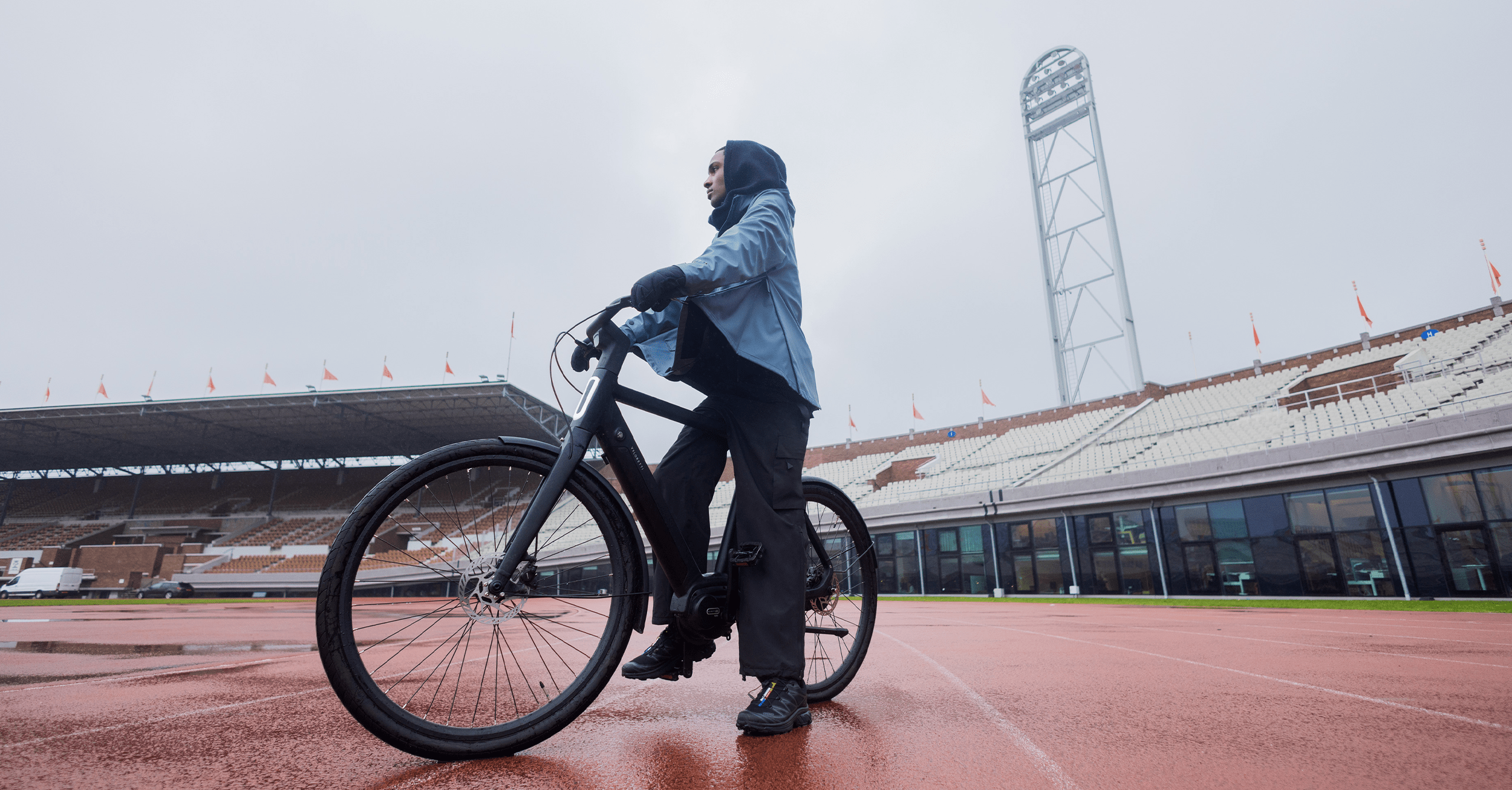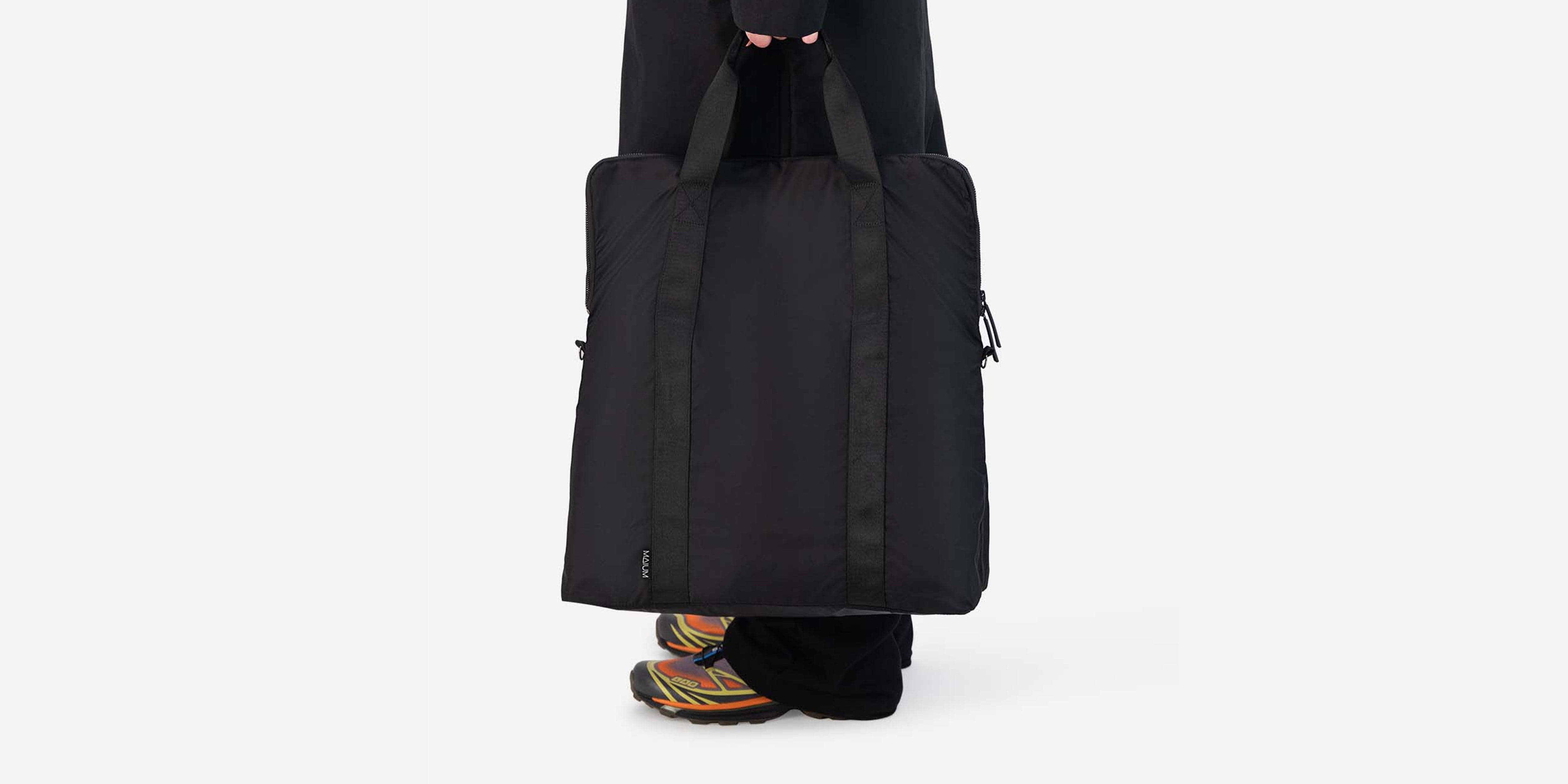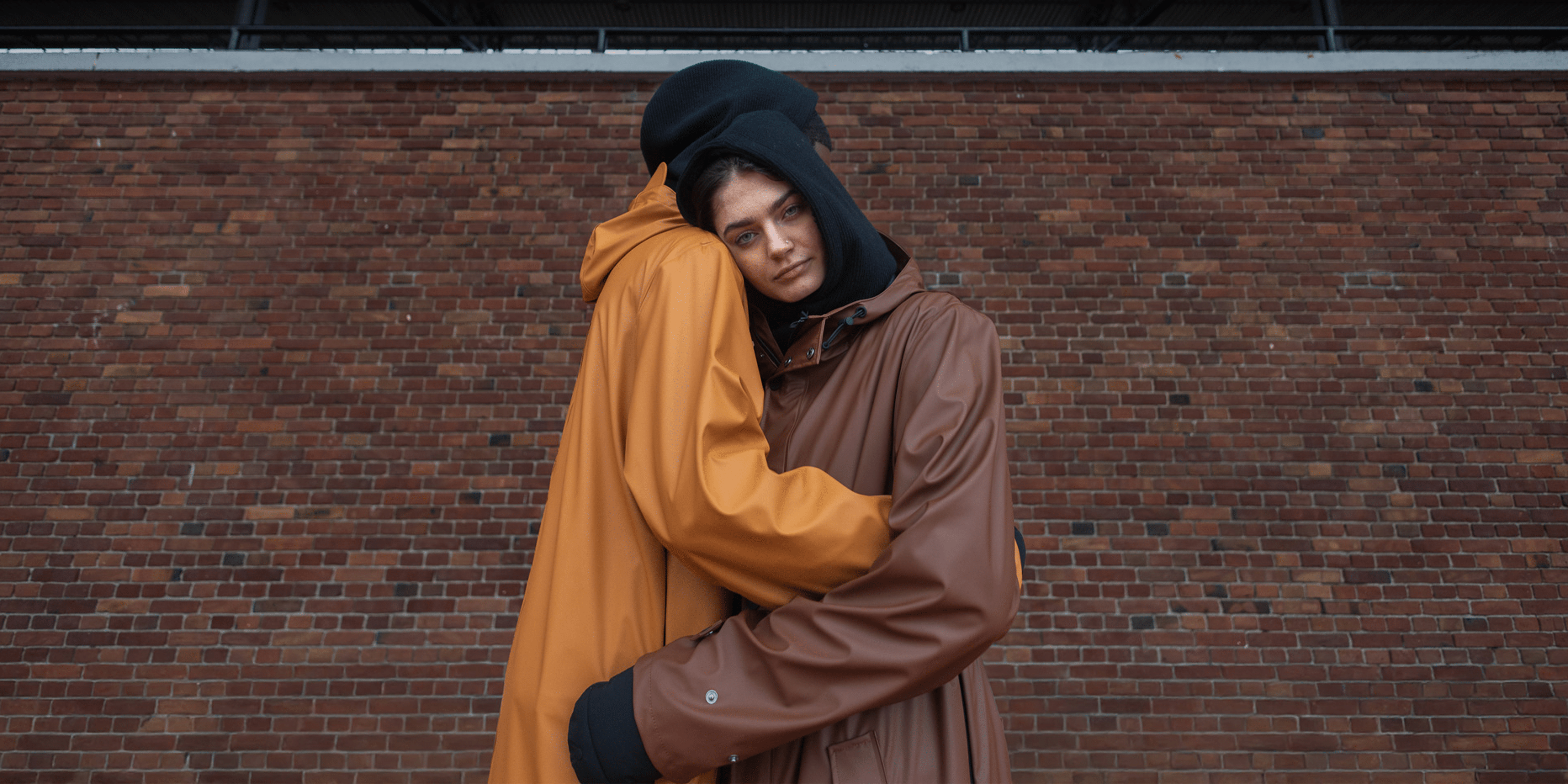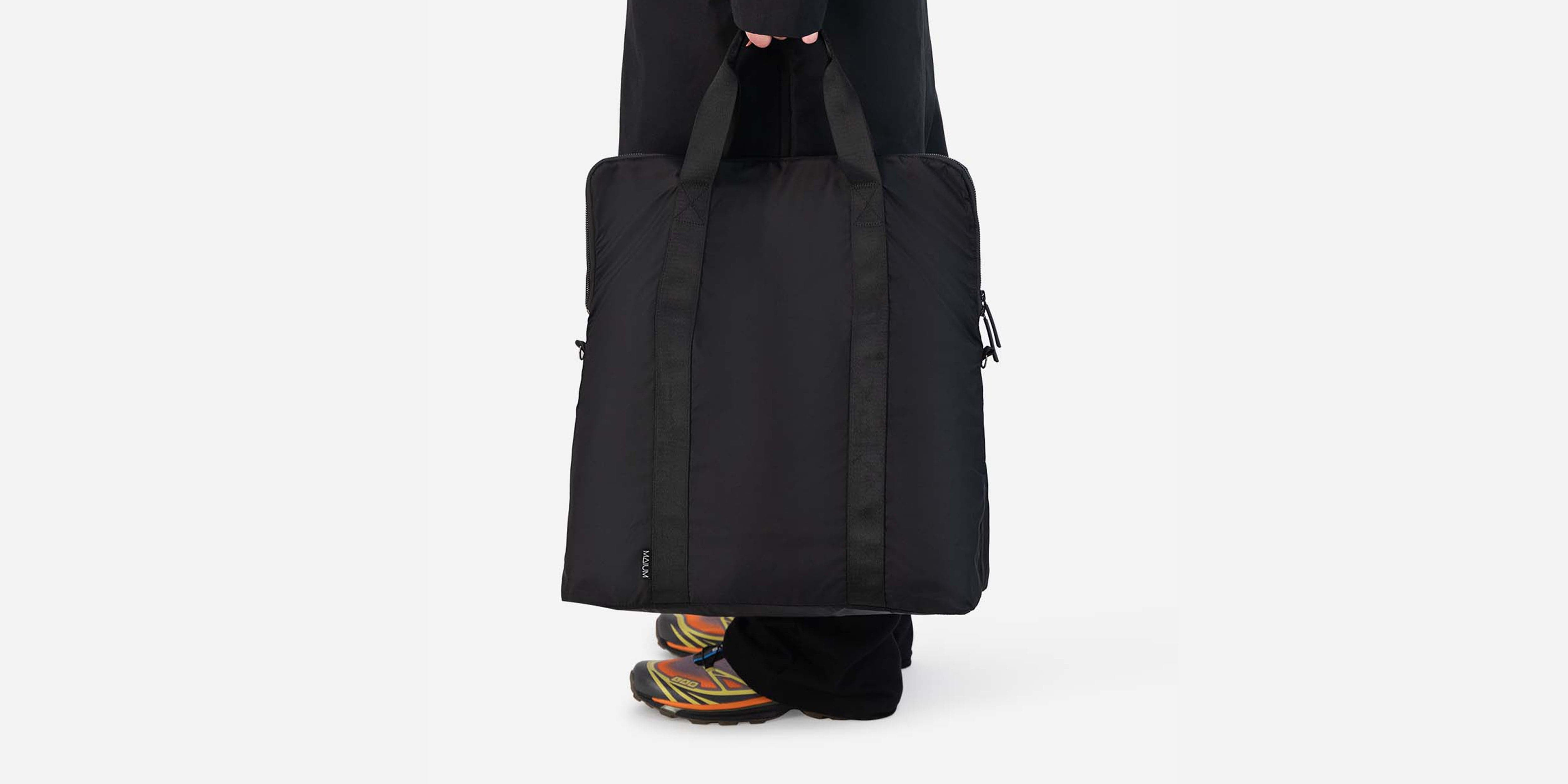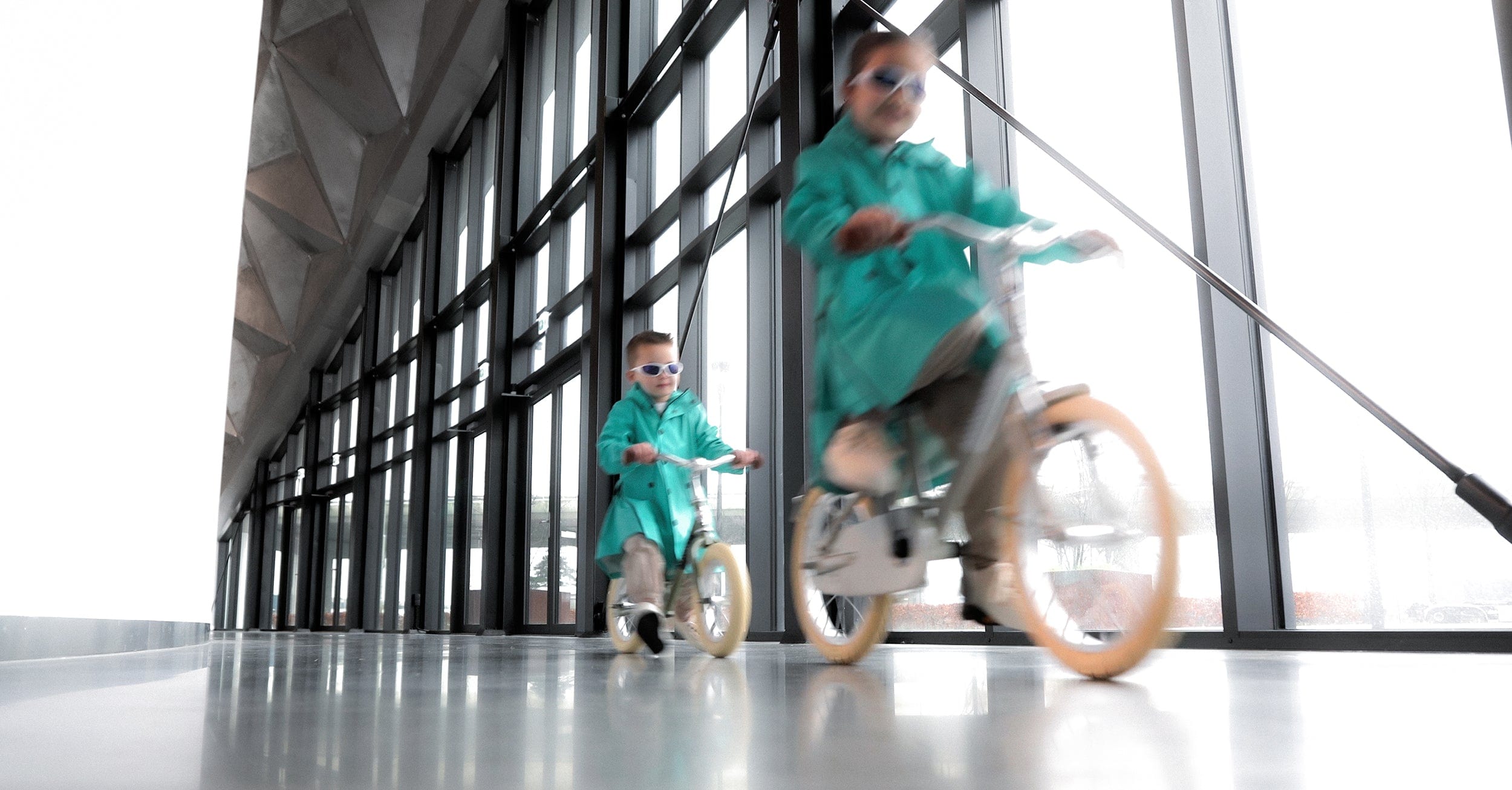More than 90% of the materials used in our jackets are made from sustainable sources. We use a variety of recycled materials such as recycled polyester (RPET) and recycled nylon for fabrics, lining and tapes. Our raincoats are fully waterproof, "designed for movement" and made for everyday use. To make our products waterproof, it is necessary to add a coating. Therefore, we have chosen to use a biodegradable polyurethane coating with bionic finish, which is currently one of the most sustainable options. None of our garments contain animal products.
Rainwear has the essential properties of being waterproof, breathable and durable. These requirements are not currently achievable with natural fibers. Therefore, we have chosen to use certified recycled synthetic fabrics in our products. We are aware that the use of RPET also has environmental consequences in a general sense. However, for our type of product, this is currently the best available option.
We are continuously committed to searching for sustainable alternatives in fabrics, packaging, labels and raw materials in general. It is crucial that forward-thinking designers combine fashion and design to create sustainable, functional and timeless alternatives.
MATERIALS
100% Recycled Polyester
Recycled Polyester (RPET) is derived from the chemical name for polyester: PET. In the recycling process, plastic bottles are cut into small pieces, melted, spun and then woven into "new" polyester fabrics.
The plastic bottles used in MAIUM jackets are collected by waste collectors in Asia. These are then compressed and taken to the recycling plant. At the recycling plant, the plastic bottles undergo the following successive steps:
First, during the separation process, the caps and labels are removed from the bottles, as these are made of plastic with different properties, for example, a different melting point. This makes it impossible to recycle without separation
The plastic bottles are then processed into small flakes and these are then cleaned
Next, the flakes are melted into so-called pellets
Finally, yarn is spun from the melted plastic that can now be used to weave fabrics for MAIUM raincoats.
Advantages of RPET include:
CO2 emissions in the production of RPET are significantly lower than in the production of virgin (non-recycled) polyester.
Ensures that less plastic ends up in landfills or in the ocean.
Does not rely on "new" petroleum as a raw material.
100% Recycled Nylon
Recycled nylon has similar benefits to recycled polyester, its use keeps it from ending up in landfills or in the ocean and uses a lot less energy and CO2 emissions in production compared to virgin nylon. MAIUM uses recycled nylon made from waste, especially post-industrial waste such as from weaving mills.
Recycled nylon is processed in the following way:
First, the nylon is separated from other types of waste, then it is thoroughly cleaned.
Then it is shredded and compressed.
Then the compressed fabric is depolymerized. This is a chemical decomposition reaction in which a polymer (organic compound whose molecules are made up of a sequence of identical parts) is broken down into monomers, a relatively simple organic molecule that can again serve as a building block for larger molecules.
These monomers are used to "molecularly" rebuild the fabric so that it can be made into nylon yarn again. The fabric we use for our products is made from this recycled nylon yarn.
The benefits of recycled nylon are:
Reduced CO2 emissions during production compared to virgin (non-recycled) nylon.
Ensures that less nylon ends up in landfills or in oceans.
Does not rely on 'new' petroleum as a raw material.
PU Coating
PU is short for Polyurethane, a class of polymers composed of organic units joined by carbamate (urethane). During the coating process, a liquid layer of polyurethane is applied to the surface of a fabric to make it waterproof, since neither recycled polyester nor recycled nylon is waterproof on its own. Besides the fact that a PU coating makes the fabric waterproof, it is strong, has a long lifespan and no harmful toxins are released during production. Currently, our biodegradable PU coating is one of the two most sustainable alternatives for waterproofing fabrics. The other is TPU lamination. We continue to look for even more environmentally friendly finishes with the same properties as PU, but they are not currently available.
A PU coating is applied in the following way:
The recycled woven fabric, both polyester and nylon, is delivered to the coating plant.
A liquid layer of polyurethane coating is applied to the fabric including the desired color for the final fabric.
After a drying process, the products are ready for finishing
TPU Lamination
TPU stands for Thermoplastic Polyurethane, an elastic, flexible and smooth form of PU lamination. Because of its durability and strength, it has a long service life, but also allows air to pass through, making it a breathable fabric - unlike ordinary polyurethane coatings. Although fossil fuels are used in the production of TPU, our goal remains to switch to even more sustainable alternatives as soon as they become available on the market.
TPU lamination is applied to fabrics in the following way:
Recycled woven fabrics are delivered to the coating and laminating plant
TPU lamination, which also contains an adhesive layer, is applied to the fabric.
It is pressed together with the recycled woven fabric by means of a heat press. This is usually done on the inside of the fabric to preserve the outer color or print of the fabric.
After a cooling period, TPU-laminated fabrics are waterproof and can be used to produce MAIUM rainwear.
Silver Lamination
Silver lamination, used in our Ponchos is made of a liquid mixture of glue, polyurethane and an aluminum powder. The latter gives it a silver color. The coating forms a membrane, a layer that makes the fabric waterproof. This is applied to the back of the fabric in two stages. The layers are heated so that the water from the adhesive evaporates, then the adhesive adheres to the fabric. Once the layers have cooled and dried, the fabric is ready for processing. The silver lamination is applied at the factory where pu-coating, TPU lamination and Bionic-Finish Eco are also applied.
Bionic-Finish Eco
Bionic-Finish ECO is an ecological technology for making fabrics long-term water repellent. Most water-repellent coatings currently available contain fluorocarbons. These fluorocarbons have a negative impact on nature, in part because they take a long time to break down naturally. Bionic-Finish Eco is a safer and more environmentally friendly alternative, free of fluorocarbons and other hazardous chemicals, including formaldehyde and kerosene. Almost all of our waterproofing products are impregnated with this bionic finish. Additional benefits are that you can wash them more often without losing water repellency, the color of the clothing is better preserved and dirt is also easy to wash off.
Free of PFAS
Our coats are PFAS-free. PFAS is the abbreviation and umbrella name for Poly and perfluoroalkyl substances. These are man-made chemicals that do not occur naturally in the environment and are also difficult or impossible to break down. PFAS have useful properties: they are water, grease and dirt repellent, among other things, which is why they are often used in making rainwear. In normal use, products with PFAS in them will not pose immediate health risks. There are specific "PFAS," for example, PFOA and PFOS and PFCs that can have harmful effects on humans. We do not use all of these chemicals in our products.
Free of PVC
Our jackets are PVC-free. PVC stands for polyvinyl chloride and is a type of plastic that softens when heated. PVC is made by reacting chlorine, carbon and ethylene (a gasoline product) with each other. PVC has a very long lifespan.
